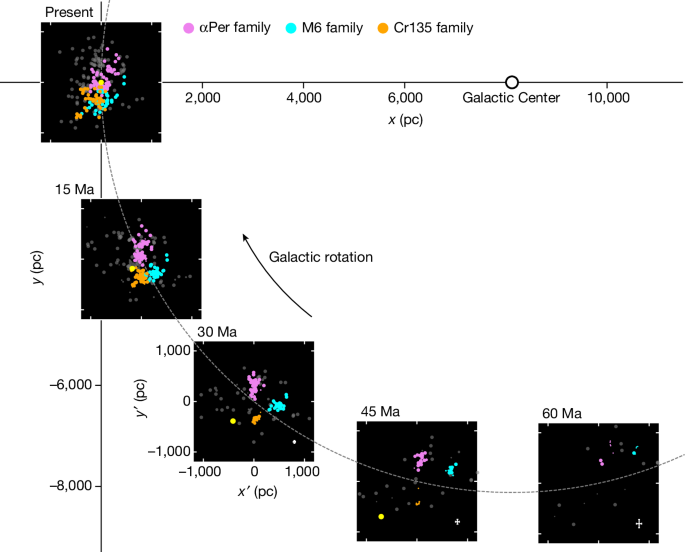Most nearby young star clusters formed in three massive complexes

Efforts to unveil the structure of the local interstellar medium and its recent star-formation history have spanned the past 70 years (refs. 1–6). Recent studies using precise data from space astrometry missions have revealed nearby, newly formed star clusters with connected origins7–12. Nonetheless, mapping young clusters across the entire sky back to their natal regions has been hindered by a lack of clusters with precise radial-velocity data. Here we show that 155 out of 272 (57%) high-quality young clusters13,14 within 1 kiloparsec of the Sun arise from three distinct spatial volumes. This conclusion is based on the analysis of data from the third Gaia release15 and other large-scale spectroscopic surveys. At present, dispersed throughout the solar neighbourhood, their past positions more than 30 million years ago reveal that these families of clusters each formed in one of three compact, massive star-forming complexes. One of these families includes all of the young clusters near the Sun—the Taurus and Scorpius–Centaurus star-forming complexes16,17. We estimate that more than 200 supernovae were produced from these families and argue that these clustered supernovae produced both the Local Bubble18 and the largest nearby supershell GSH 238+00+09 (ref. 19), both of which are clearly visible in modern three-dimensional dust maps20–22. Analysis of data from Gaia Data Release 3 and other large spectroscopic surveys shows that nearly 60% of high-quality young clusters within 1 kpc of the Sun originated from just three distinct star-forming complexes.
Related Keywords
, Astronomical Society Of The Pacific , Star Formation , Early Stellar Evolution , Star Forming Regions , Astronomical Society , Data Release , Local Bubble , Open Source Softw , Radcliffe Wave , Local Association , Sloan Digital Sky Surveys , Stellar Evolution , Astropy Project , Source Softw ,
comparemela.com © 2020. All Rights Reserved.